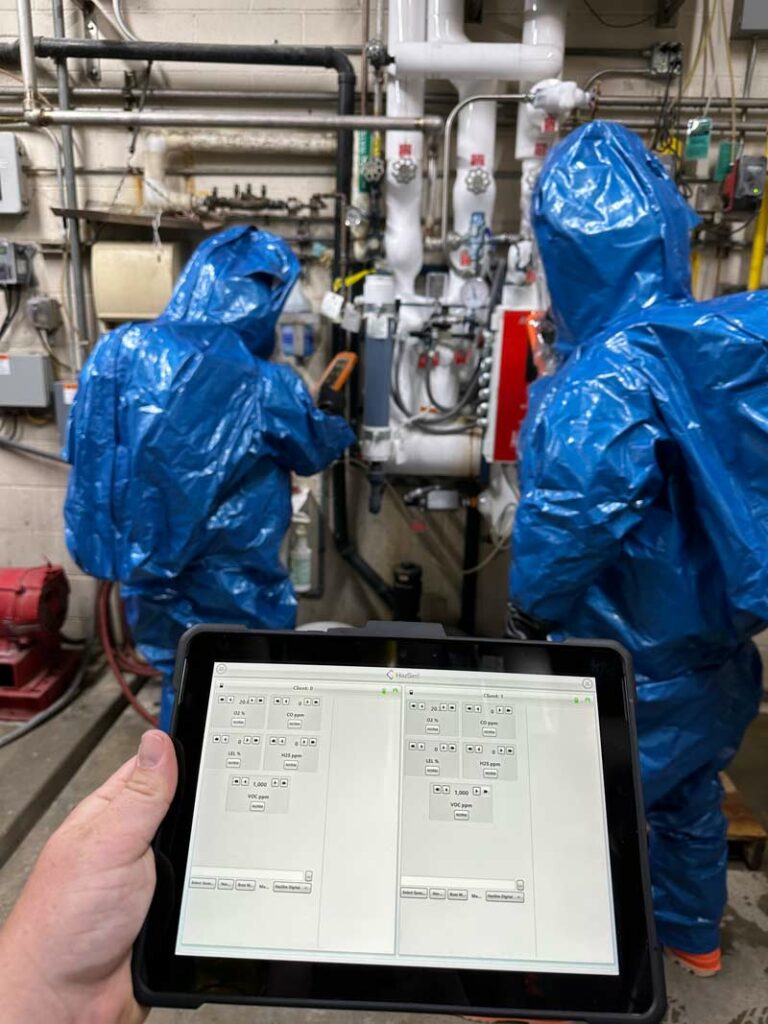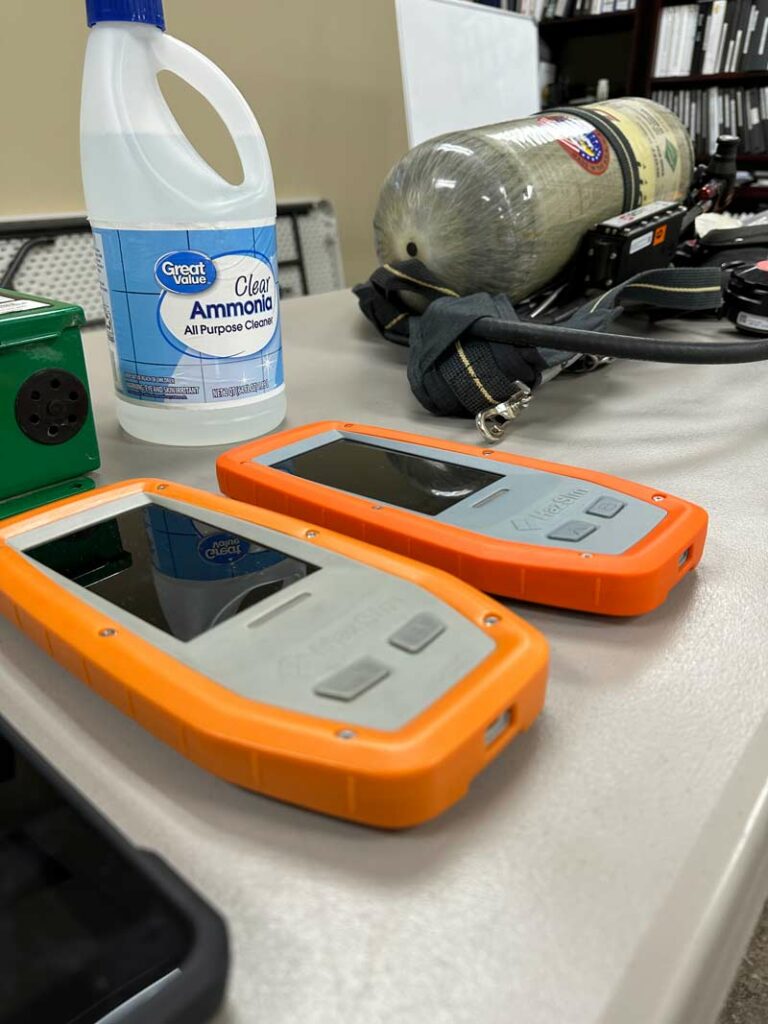Hazmat Training Debrief will give you a quick recap of interesting hazmat training going on. This week we look at recent training by MySafety, LLC
What agency led the training?
Where was it held?
At a poultry processing facility in northeast Ohio.
What was the set up time?
The prep work was organized within hours to satisfy the requirements of the PSM/RMP standards. The training drill needs to be performed on the covered process, which for this facility is the ammonia refrigeration system. This streamlines the preparation process because this was an annual refresher class.
How many were trained?
Twenty participants; 10 per day.
What hazmat levels were the trainees?
Operations, technicians and incident command.
What were the training objectives?
PPE selection for recon, decon and entry teams.
Deep dive into respiratory equipment components on APRs and SCBAs. Identifying low- and high-pressure hoses on the SCBA, identifying the SCBA rescue loop, how to safely and properly replace a Grade D air cylinder, identifying mechanical voice amplifiers on full-face respirators, and so much more.
Class activity on how 5X gas detectors are only designed to measure specific air contaminants and can’t detect every type of toxic gas.
Explain how a 2% reading on a gas detector doesn’t equal 20,000 ppm because it’s reading 2% of the LEL. For example, a gas detector displaying a 2% reading would be 3,000 ppm if the chemical LEL is 150,000 ppm.
Scenario: ammonia alarm system was activated at the machinery room for an industrial refrigeration system. Total system ammonia inventory of 25,000 pounds (medium size system); large systems can have 100,000 pounds or more. The refrigeration system auto-purger (removes air from the refrigeration system) developed a continuous uncontrolled release of ammonia and the equipment leak created an IDLH atmosphere (emergency ventilation is active and working correctly). Within a 6-foot radius of the equipment, the ppm concentration was around 1,500 ppm and on-site refrigeration technicians could not isolate the leak without chemical burns to the skin and body due to the high concentration of ammonia. Level A ensemble needed to be donned for safe isolation of the equipment
What evolutions did trainees do?
To comply with the PSM/RMP standards, only qualified personnel are allowed to operate or manipulate the ammonia system, which requires special training. Only a couple participants in each class were authorized to manipulate the ammonia refrigeration system and the other participants were all support team. We did have the support team switch roles for either helping technicians suit up in Level A, to having the support team suit up in Level B (decon team). To add realism to the drill, we played a “what if” when the main isolation valve for the drill did not hold, and the support team in the cold zone had to communicate to them the next valve(s) for isolation to stop the release by using the system piping schematic for the ammonia refrigeration system.
What technology was used?
Two HazSim Pro 2.0 handhelds with one convertible tablet instructor server.
What were the biggest successes?
We had participants create teams. They would race the other team to see who could get their team’s response technician fully donned in Level A ensemble and clicked onto SCBA air.
The last suit-up drill was not performed since the previous year, the quickest time during the first round was 4 minutes, 54 seconds. On the third suit-up race, the quickest time was an astonishing 1 minute, 30 seconds. This was a great reminder on why practice makes perfect and students really enjoyed the competitive part of the drill for suit-ups.
What would you do different next time?
We would request a pre-course intake form for all the emergency response team roles to assist with drill planning. Operations-level personnel can consist of multiple different departments such as maintenance, management, production leads, human resources, sanitation, environmental health and safety, and potentially more.
Original post – Copyright © 2024 HazmatNation.com. Externally linked references may hold their own independent copyright not assumed by HazmatNation





